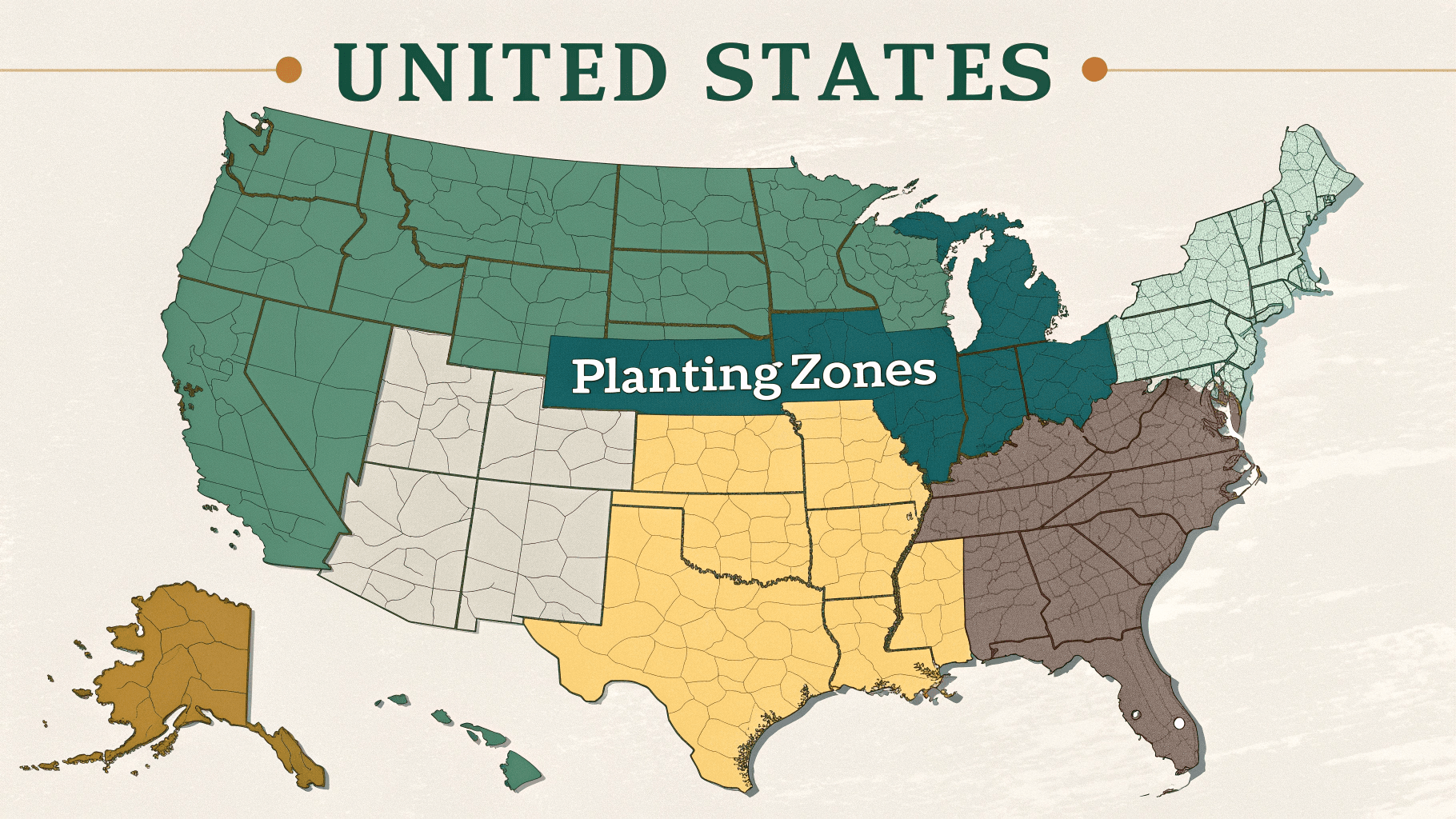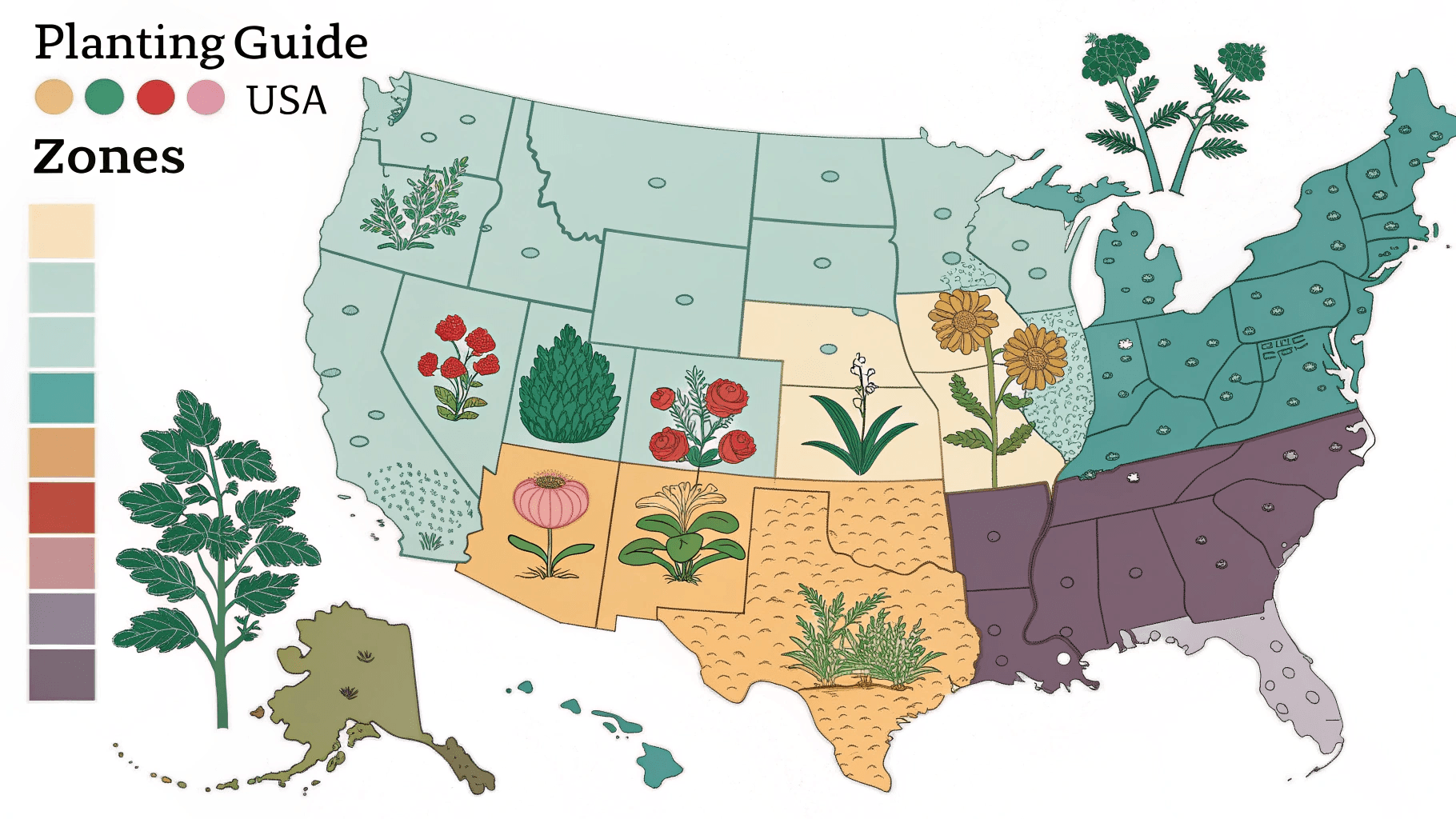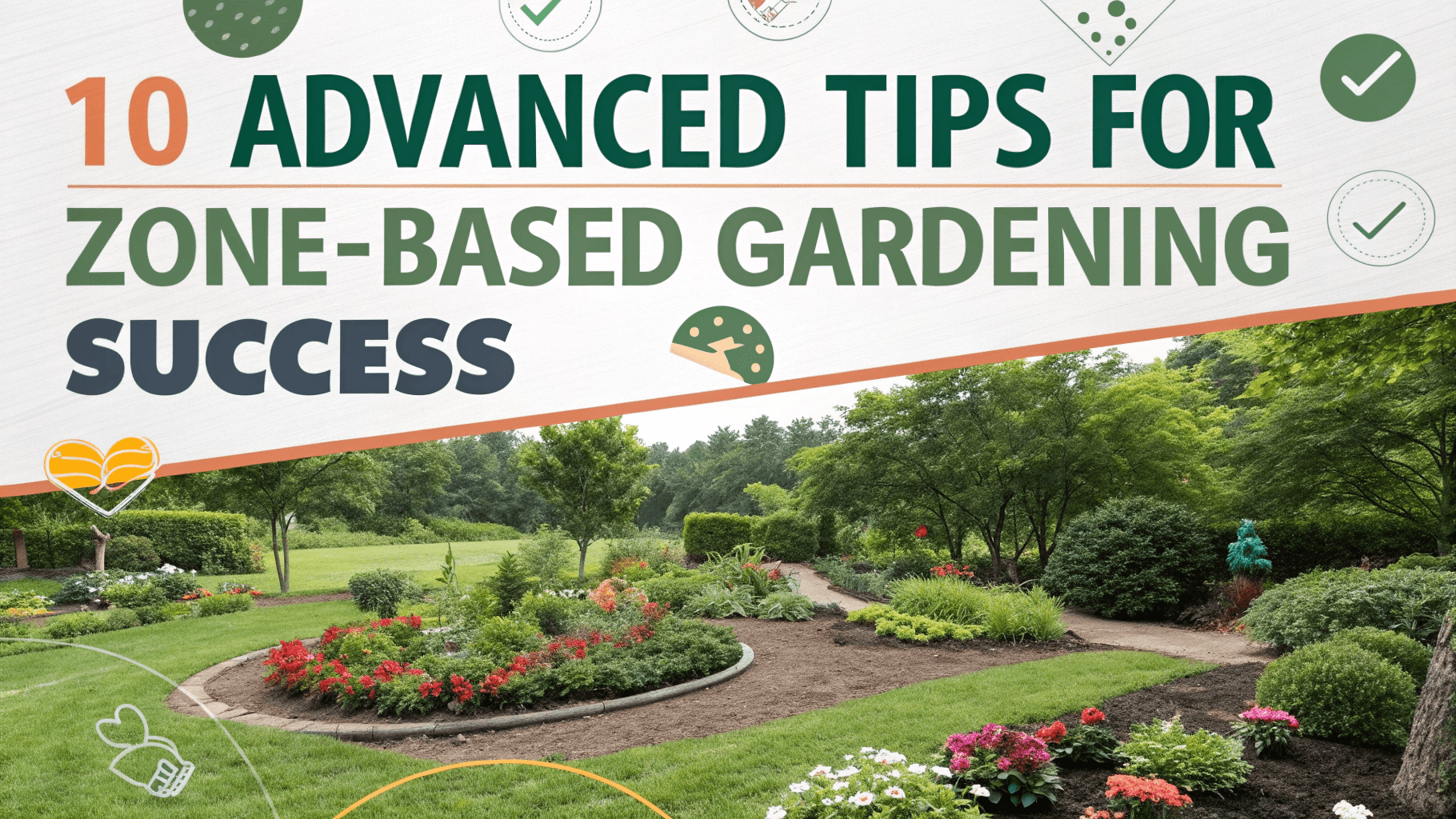Every thriving garden begins with one essential question: What are the planting zones by zip code?
Your USDA hardiness zone—determined by your location’s coldest winter temperatures—dictates which plants can survive year-round, from frost-sensitive basil in Florida to cold-hardy kale in Minnesota.
In this guide, you’ll master how to find your exact planting zone by zip code, interpret frost dates, and adapt gardening strategies to your climate. Plus, use our free interactive tool to instantly pinpoint your zone and unlock personalized planting tips!
What Are Planting Zones by Zip Code?
The USDA Plant Hardiness Zone Map divides North America into 13 zones (Zone 1a to 13b) based on average annual extreme minimum winter temperatures. Each zone represents a 10°F range, split into “A” and “B” half-zones (5°F differences).

For example:
- Zone 5b: -15°F to -10°F
- Zone 10a: 30°F to 35°F
These zones help gardeners select plants that survive their local winters. A plant labeled “hardy to Zone 7” can withstand temperatures as low as 0°F.
Why Temperature Ranges Matter
Winter cold kills plants by freezing their roots and stems. For example:
- Tropical hibiscus (Zone 10+) dies in Zone 7 winters.
- Apple trees (Zones 3–8) require winter chill hours to produce fruit.
A Brief History of USDA Zones
The USDA first published the map in 1960, updating it in 1990, 2012, and 2023. The 2023 version uses 30 years of climate data (1991–2020) and advanced GIS technology. Key improvements:
- Alaska and Hawaii: Detailed maps for previously underrepresented regions.
- Urban Heat Islands: Cities like Atlanta and Dallas now show warmer zones.
- Interactive Features: Zip code search, GPS-based lookup, and printable maps.
Beyond USDA Zones: Complementary Climate Systems
While USDA zones focus on cold tolerance, pair them with:
- AHS Heat Zones: Tracks days above 86°F (critical for plants like peonies).
- Sunset Climate Zones: Factors in humidity, elevation, and rainfall (popular in the Western U.S.).
- Köppen Classification: Global system categorizing tropical, arid, and temperate climates.
How to Find Your Planting Zone by Zip Code
Step-by-Step Guide to the USDA Interactive Map:
- Visit the USDA Plant Hardiness Zone Map.
- Click the magnifying glass icon and enter your zip code.
- Zoom in to your exact location for precise zone details (e.g., 7a vs. 7b).
- Click “Download High-Resolution Map” for offline use.
Pro Tip: Double-check with local nurseries—microclimates can shift your zone!
Try our Free Growing Zone Map
USA Plant Hardiness Zone Finder
Key Updates to the 2023 USDA Hardiness Zone Map
The 2023 map reflects warmer temperatures in 50% of the U.S. Notable shifts:
- Pacific Northwest: Portland, OR, moved from 8b to 9a.
- Midwest: Minneapolis shifted from 4b to 5a.
- Northeast: Philadelphia is now Zone 8a (up from 7b).
Why Did Zones Change?
While climate change plays a role, the USDA attributes shifts to:
- Improved Data: 13,412 weather stations (vs. 7,983 in 2012).
- Urban Heat Islands: Cities absorb and radiate heat, warming local zones.
- 30-Year Averages: The 2023 map uses 1991–2020 data, replacing 1976–2005.
Example: A Zone 7b gardener in 2012 might now be in 8a—expanding options for figs and camellias.
Frost Dates & Planting Schedules by Zone
Frost kills tender plants. Your zone predicts average first and last frost dates, which determine planting times:
| Zone | Last Frost (Spring) | First Frost (Fall) | Key Crops |
|---|---|---|---|
| 3a | June 1–15 | August 15–31 | Potatoes, Peonies, Radishes |
| 5b | April 30–May 15 | October 1–15 | Apples, Carrots, Hostas |
| 7b | March 22–April 3 | November 1–15 | Figs, Blueberries, Hydrangeas |
| 9a | February 7–21 | December 1–15 | Avocados, Spinach, Bougainvillea |
| 11a | No frost | No frost | Mangos, Papaya, Orchids |
Pro Tip: In Zones 7–9, plant a second crop of broccoli in late summer for a fall harvest!
Zone-Specific Planting Guides

Zones 3-5: Short Growing Seasons
Top Plants for Cold Climates
- Vegetables: Kale, carrots, and potatoes (plant after last frost).
- Fruits: Honeycrisp apples, raspberries (require winter chill).
- Flowers: Peonies, Siberian irises.
Overcoming Challenges
- Extend the Season: Use cold frames or hoop houses.
- Soil Warming: Lay black plastic mulch to speed up soil thawing.
Zones 6-7: Moderate Seasons
Ideal Plants
- Spring: Peas, lettuce, and strawberries.
- Fall: Garlic, Brussels sprouts, and pansies.
Soil and Water Tips
- Test soil pH annually (ideal: 6.0–7.0 for most veggies).
- Mulch with straw to retain moisture and suppress weeds.
Zones 8-9: Mild Winters
Year-Round Gardening
- Summer: Okra, sweet potatoes, and black-eyed peas.
- Winter: Collards, kale, and winter lettuce.
Citrus Care
- Protection: Cover trees with frost blankets during freezes.
- Pruning: Trim in late winter to encourage spring growth.
Zones 10-11: Tropical Climates
Exotic Favorites
- Fruits: Papaya, guava, and passionfruit.
- Flowers: Bird of paradise, heliconia.
Managing Humidity
- Fungal Prevention: Space plants for airflow and water at the base.
- Shade Solutions: Use 30% shade cloth for delicate greens.
California Gardening Zones (5–11)
Coastal vs. Inland
- Coastal Zones (9b–10a): Grow avocados, citrus, and succulents.
- Central Valley (9a): Almonds, olives, and drought-tolerant lavender.
Mountain Zones
- Zones 5–7: Cherries, apples, and lilacs requiring winter chill.
10 Advanced Tips for Zone-Based Gardening Success

Tip 1: Layer Plants for Microclimate Control
- How: Plant tall sunflowers or corn on the west side to shade lettuce and spinach.
- Why: Reduces heat stress in Zones 7–10 during summer.
Tip 2: Use Soil Thermometers for Perfect Timing
- How: Insert a thermometer 2″ deep—plant tomatoes when soil hits 60°F.
- Why: Soil warms slower than air; prevents root shock.
Tip 3: Winter Sowing in Milk Jugs
- How: Cut a jug in half, add soil and seeds (e.g., kale), tape shut, and leave outdoors.
- Why: Seeds germinate naturally in Zones 5–7 when conditions are right.
Tip 4: Zone Stacking with Structures
- How: Plant Zone 8 figs against a south-facing wall in Zone 7.
- Why: Walls absorb heat, creating a microclimate 1–2 zones warmer.
Tip 5: Combat Zone-Specific Pests
- Problem: Japanese beetles (Zones 4–8) devour roses and beans.
- Solution: Apply milky spore powder to lawns in fall to kill grubs.
Tip 6: Drip Irrigation for Arid Zones
- How: Install a timer-based system with emitters at plant bases.
- Why: Reduces evaporation in Zones 9–11 by 50%.
Tip 7: Companion Planting for Healthier Crops
- Example: Plant marigolds with tomatoes to repel nematodes.
- Science: Marigolds release alpha-terthienyl, a natural pest deterrent.
Tip 8: Frost Alerts via Apps
- Top Picks: FarmSense, Weather Underground.
- Why: Get real-time alerts to cover plants during unexpected frosts.
Tip 9: Keep a Garden Journal
- Track: Planting dates, bloom times, and failures.
- Benefit: Identify patterns (e.g., zucchini thrives when planted after May 1 in Zone 6).
Tip 10: Join Local Gardening Groups
- Where: Facebook groups like “Zone 9b Gardeners” or Meetup.com clubs.
- Why: Swap seeds and get hyperlocal advice (e.g., best tomato varieties for coastal Zone 10a).
Bonus: Read my “How to Start Gardening for Beginners” article if you are just starting with your gardening journey, it will help you a lot!
Final Thoughts
Your USDA planting zone is a roadmap—not a restriction. Experiment with native plants like purple coneflower (Zones 3–9) or serviceberries (Zones 4–8).
For more help, contact your local extension office or explore the USDA’s Grower Resources.
Happy gardening!


 ChatGPT
ChatGPT
 Perplexity
Perplexity
 Claude
Claude

Leave a Reply